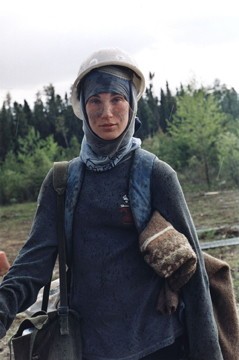Working histories
Exhibition offers feminist perspectives on art and labour
Looking for a great way to spend International Women’s Day on Mar. 8 this year? The Winnipeg Art Gallery exhibition She Works Hard… is a must-see for those interested in connections between art, feminism and labour. It’s also a chance to see several historical and contemporary gems from the WAG’s permanent collection.
Immediately noticeable is the broad range of styles, ideas and backgrounds represented. Women in a variety of work settings are depicted, from the domestic labour shown by Frances Flaherty and Barbara Cole, to the hard labour alluded to in Sarah Anne Johnson’s “Nadine,” part of her photographic series on tree planting.
Many of the works examine identity and subjectivity, including Suzy Lake’s 1974 piece “A Genuine Simulation Of…” Lake depicts her face going through seven stages of makeup application, transforming into a glamorized version of her once natural self.
Dominique Rey’s photographs from her Selling Venus series also express the complex relationships that exist between gender, work and representation. For the series, Rey spent time with exotic dancers in a South Carolina bar, photographing their behind-the-scenes beauty rituals.
These two works illuminate ideas surrounding beauty, femininity and performance. It is interesting to see how contemporary female artists like Rey continue to address issues brought up years ago by artists such as Lake, who would have worked during the 1970s women’s movement.
Other highlights include Kara Walker’s “Freedom: A Fable,” a pop-up book featuring the artist’s characteristically sexual and grotesque black paper cut-outs that illustrate histories of slavery in the United States.
In Marcel Dzama’s “Mademoiselle la guard” women wear elegant clothing, yet carry spears. Are they dangerous, or just modeling a look? This whimsical piece by Dzama is reminiscent of fashion advertisements drawn by Andy Warhol in the 1950s, a style that many might describe as feminine. Is there a uniquely feminine way of making art? How is this complicated when the artist is male?
Intersections of gender, class and ethnicity are created with the inclusion of Inuit artwork, which is not often shown next to non-Inuit work. A useful connection is made between cultures with the print “Woman Juggling,” by Sorosiluto Ashoona, and a portrait of Ashoona made by Joyce Wieland after visiting the Inuit artist in Cape Dorset.
As part of the exhibition, artist Lyndsay Ladobruk will be performing her piece “Plastic Housewife,” from Mar. 5 to Mar. 8, during regular gallery hours. Performance art has been an important mode of expression for women artists, and the piece will add to an already strong lineup of historical and contemporary art by and about women who work hard.
Published in Volume 63, Number 22 of The Uniter (March 5, 2009)







